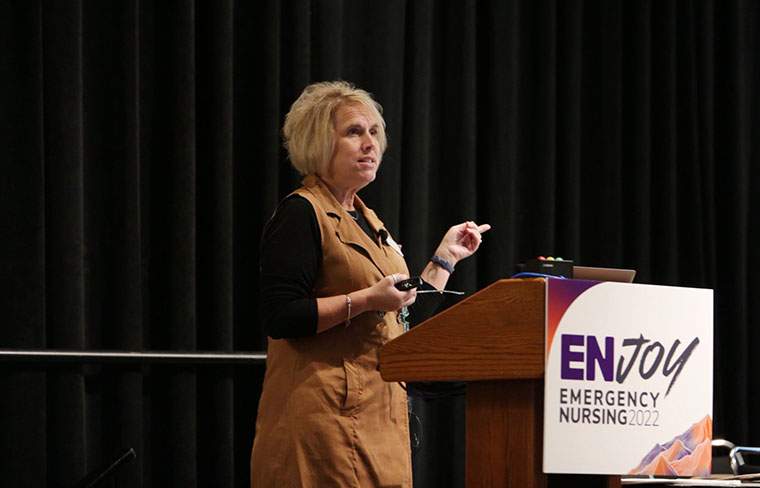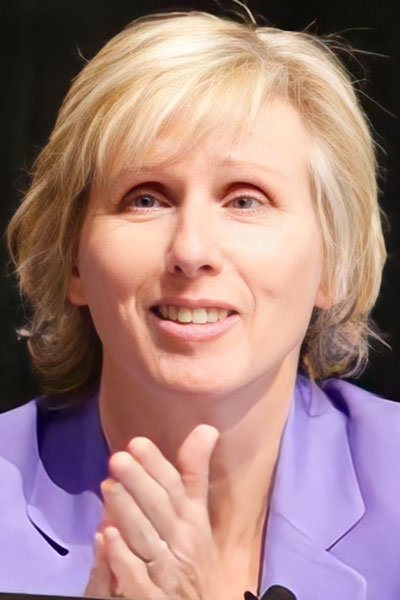
Accurate and rapid triage is essential for successful clinical performance. Obstetric triage can be even more complicated than general or trauma triage because it requires staff to assess a patient’s labor condition and fetal health.

To discuss these unique challenges, Emergency Nursing 2022 participants gathered Sept. 30 for a pre-session activity facilitated by the Association of Women’s Health, Obstetric and Neonatal Nurses. “Collaborations in the Identification and Management of Obstetric Emergencies” was led by AWHONN Senior Director of Nursing Education, Research and Practice Catherine M. Hill and Clinical Program Development Manager Susan Hale.
Integrating case scenarios and roundtable discussions, the presenters and participants shared insights on triaging pregnant people, identifying patient complications, initiating treatment protocols for pregnant and postpartum patients in the ED, and recognizing maternal post-birth warning signs.
In 2020, there were approximately 2,800 hospitals with birthing facilities across the United States, which was a 15% decrease from 2010. Additionally, only 34.5% of critical access hospitals offer obstetric services. These trends have created and exacerbated maternity care deserts, areas with no hospitals or providers providing obstetric services.
“In the United States, our maternal mortality far outstrips that of any other industrialized nation,” Hill said. “A majority of deaths are happening up to 42 days postpartum.”
To address these obstetric emergencies more efficiently, AWHONN has developed and updated its guidelines. The organization recommends all patients be asked upon admission whether they are pregnant or have given birth in the past 42 days. This minor step could make an outsized impact in emergency departments. According to a 2020 study that included chart data from more than 12,700 emergency nurses, pregnancy status was not documented in 86.5% of cases during triage.
AWHONN has developed its own five-level triage scale, the Maternal Fetal Triage Index, for nurses to apply during maternal and fetal assessments to classify a patient’s acuity and prioritize the urgency for provider evaluation.
Traditionally, triage in obstetric units has operated on a first come, first served basis. This method fails to account for patients who are in urgent need of care, explained a AWHONN video shown during the session. A systematic approach to triage using an acuity scale has been shown to improve efficiency.
“When we developed the MFTI, we based it on the Emergency Severity Index,” Hill explained. “We created priorities instead of levels, but they’re very similar.”
According to the MFTI, Priority 1 patients require medical attention immediately. These are cases in which the mother or fetus is showing severely abnormal vital signs, the mother or fetus requires immediate lifesaving intervention, or when birth appears imminent. Priority 5 cases are considered least urgent on the MFTI scale. Patients who fall into this priority are usually those who have requested service or scheduled a procedure with no complaints of pain or abnormal symptoms.
While the MFTI was not initially developed for postpartum patients, AWHONN now recommends it be applied in such cases. According to Hill, multiple hospitals have applied the tool in quality improvement studies and the data has confirmed the MFTI’s effectiveness when applied to postpartum people.
“We want all nurses who are caring for pregnant postpartum people to be educated on the MFTI,” Hill said. We’re happy to travel to provide that education to wherever people are asking us to come.”
Register Today for Emergency Nursing 2023
Registration for Emergency Nursing 2023 is still open! Level up with ENA and thousands of your emergency nursing peers in sunny San Diego on Sept. 21-23. Attendees can look forward to immersive experiences with hands-on learning opportunities, high-quality sessions, networking events and can’t-miss celebrations sure to propel their careers onward and upward.

